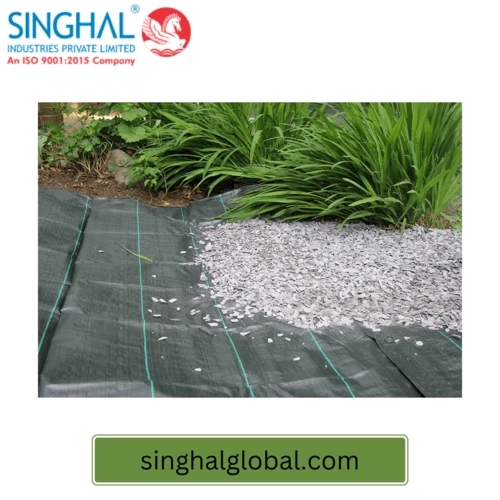For anyone who\'s ever battled a stubborn dandelion or wrestled with a persistent patch of crabgrass, the dream of a weed-free landscape is a compelling one. Enter the weed control mat, also known as a Weed control sheet – a seemingly simple solution that promises to revolutionize your garden. But before you rush out and buy every roll you can find, there\'s some wisdom to be gleaned from the experts. This article will delve into the world of weed mats, exploring their benefits, drawbacks, and best practices for achieving a beautiful, low-maintenance landscape.
Understanding Weed Control Mats
Weed control mats are sheets of woven or perforated fabric, typically made from polypropylene or polyester. They are laid on top of prepared soil, creating a barrier that prevents sunlight from reaching weed seeds and existing weeds. Deprived of light, weeds struggle to germinate and existing ones eventually die off. Weed control mats come in various thicknesses, sizes, and permeabilities, catering to different landscaping needs.
The Benefits of Weed Control Mats
1. Reduced Weeding: The most obvious benefit is the significant reduction in weeding chores. Once laid down and secured, weed mats keep weeds at bay, freeing you up to spend more time enjoying your garden.
2. Moisture Retention: Some weed mats help retain moisture in the soil, reducing the need for frequent watering, especially beneficial in hot and dry climates.
3. Erosion Control: Weed mats can help prevent soil erosion, particularly on slopes or areas prone to heavy rain.
4. Temperature Regulation: By regulating soil temperature, weed mats can create a more favorable environment for certain plants, especially those sensitive to fluctuating temperatures.
5. Suppression of Germinating Seeds: Weed mats effectively prevent weed seeds from establishing themselves, leading to a long-term reduction in weed populations.
Drawbacks and Considerations
While weed mats offer undeniable benefits, they\'re not a silver bullet. Here are some factors to consider:
1. Reduced Oxygen and Nutrient Flow: Densely woven mats can impede the flow of oxygen and nutrients to plant roots. Opt for permeable fabrics or create holes around desirable plants for better penetration.
2. Heat Buildup: Dark-colored weed mats can absorb heat, potentially harming delicate plants in hot climates. Choose lighter colored mats or consider raised garden beds for improved airflow.
3. Microplastics: Some concerns exist regarding the potential for microplastics leaching from weed mats into the soil. Look for eco-friendly, biodegradable options made from natural materials like jute or coir.
4. Not a Permanent Solution: Weed mats eventually degrade over time, and weeds can establish themselves on top of the mat if seeds are blown in or debris accumulates.
5. Installation Considerations: Improper installation can lead to the mat blowing away in strong winds or becoming dislodged. Secure the mat with landscape staples or pins for optimal performance.
Choosing the Right Weed Control Mat
Selecting the right weed control mat depends on your specific needs. Here are some key factors to consider:
1. Material: Opt for permeable fabrics that allow for water and air circulation. Biodegradable options are a more sustainable choice.
2. Thickness: Thicker mats offer better weed suppression but may restrict air and water flow. Choose a thickness suited to your plant types.
3. Size: Select a mat size that covers the desired area with minimal cutting required. Overlap edges slightly to prevent weed growth in between.
Best Practices for Using Weed Control Mats
1. Prepare the Soil: Before laying the mat, remove existing weeds and debris, and prepare the soil for planting. Leveling the area ensures a smooth surface for the mat.
2. Cut Holes for Plants: Create openings in the mat for your desired plants, ensuring sufficient space for future growth.
3. Secure the Mat: Use landscape staples or pins to secure the mat to the ground, preventing windblown displacement.
4. Mulch Around Plants: Apply a layer of mulch around planted areas to retain moisture, suppress remaining weeds, and enhance aesthetics.
5. Monitor Regularly: Regularly inspect the area under the mat for any weeds pushing through or seeds accumulating on top. Remove them promptly to maintain weed control.
Weed Mat Factories – Finding the Right Supplier
If you\'re considering large-scale landscaping projects or starting a business, sourcing weed control mats directly from a Weed mat factory can be a cost-effective option. Look for reputable manufacturers who offer high-quality, durable mats made from eco-friendly materials. Consider factors like product variety, minimum order quantities, and bulk discounts when choosing a supplier.
Conclusion
Weed control mats offer a valuable tool for gardeners and landscapers seeking to reduce weeding chores and maintain a weed-free landscape. However, understanding their limitations and using them in conjunction with other weed suppression methods like mulching and proper planting practices optimizes results. By carefully selecting the right mat and following best practices, you can leverage the benefits of weed control mats to achieve a beautiful, low-maintenance garden. Remember, a combination of strategies often leads to the most sustainable and effective weed control in the long run.
FAQs (Frequently asked questions)
Q1. Can I plant vegetables directly through a weed control mat?
A1. While technically possible, it\'s not ideal. The mat may impede root growth and make harvesting difficult. Consider raised garden beds with weed control fabric underneath for vegetable gardening.
Q2. Do I need to remove the weed mat after it degrades?
A2. No, removal isn\'t strictly necessary. Degraded weed mats can decompose further over time and contribute some organic matter to the soil. However, if the mat becomes visually unappealing or hinders new plantings, you can remove it and replace it with a fresh one.
Q3. Can I use weed control mats around trees and shrubs?
A3. Yes, weed mats can be used around established trees and shrubs. However, leave a sufficient gap around the trunk (around 6-12 inches) to allow for proper air circulation and prevent the mat from constricting the root flare.


